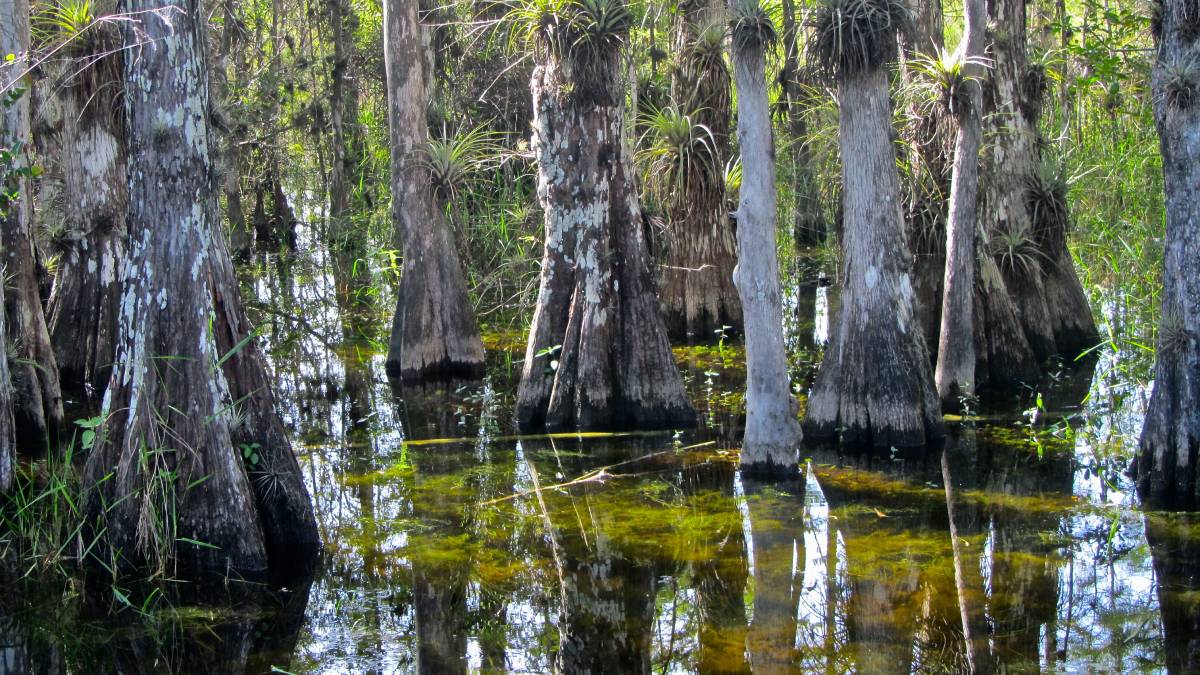Research & Developments is a blog for brief updates that provide context for the flurry of news regarding law and policy changes that impact science and scientists today.
Update 21 August 2025: A federal judge has ordered that the detention center in the Everglades, dubbed “Alligator Alcatraz,” must stop expansion and wind down operations within 60 days. This order was in response to the lawsuit brought forth by environmental groups and tribal nations seeking the facility’s closure on environmental grounds. The state of Florida appealed the ruling the later that day. It is unclear which, and how many, detainees will be relocated or deported as legal challenges continue.
Update 11 August 2025: A federal judge in Miami on 7 August ordered construction to be paused at Florida’s immigration detection facility in the Everglades. This two-week halt to new construction came after a hearing in the lawsuit brought by environmental groups, which was joined by the Miccosukee Tribe of Indians. This is one of many lawsuits that have been brought against the hastily-constructed facility since its opening, including some regarding violations of civil and human rights.
1 July 2025: Today, President Trump is visiting a new immigration detention facility built on a disused airstrip in the Florida Everglades. On 27 June, environmental groups sued the U.S. Department of Homeland Security (DHS), U.S Immigration and Customs Enforcement (ICE), the Florida Division of Emergency Management, and Miami-Dade County, seeking a temporary restraining order to stop the construction and opening of the facility.
The lawsuit from Friends of the Everglades and the Center for Biological Diversity argues that the facility’s construction did not undergo environmental reviews legally required under the National Environmental Policy Act. The groups assert that constructing the facility, transporting and housing thousands of people on site, and then flying them directly from the facility to other locations, will undermine decades of work spent restoring and protecting the Everglades’ delicate ecosystem.
“The site is more than 96% wetlands, surrounded by Big Cypress National Preserve, and is habitat for the endangered Florida panther and other iconic species. This scheme is not only cruel, it threatens the Everglades ecosystem that state and federal taxpayers have spent billions to protect,” Eve Samples, executive director of Friends of the Everglades, said in a statement.
“The Miccosukee Tribe is opposed to the use of our ancestral lands in Big Cypress as a detention facility.”
A spokesperson for Florida Governor Ron DeSantis said that the facility “will have no impact on the surrounding environment” and that they will oppose the lawsuit in court.
DeSantis and other state officials have claimed emergency powers to commandeer Dade-Collier Training and Transition Airport and build the migrant facility in roughly a week. Given the nickname “Alligator Alcatraz,” the detention facility is made of tents, trailers, and other temporary buildings and is designed to hold up to 5,000 people detained by DHS and ICE.
Immigration and human rights activists have raised additional concerns about housing thousands of people in tents and trailers at the height of a hot and humid Florida summer and during what is likely to be an above-normal hurricane season. Others are concerned about the environmental impact of a crowded detention center near an aquifer that supplies drinking water to the surrounding area.
Indigenous tribes also vehemently oppose the construction of the facility on the land, which is sacred to the Miccosukee Tribe of Indians of Florida and the Seminole Tribe of Florida. There are 19 traditional Miccosukee and Seminole villages in Big Cypress, as well as ceremonial and burial grounds and other gathering sites.
Talbert Cypress, Chairman of the Miccosukee Tribe of Indians of Florida, stated, “Rather than Miccosukee homelands being an uninhabited wasteland for alligators and pythons, as some have suggested, the Big Cypress is the Tribe’s traditional homelands….The Miccosukee Tribe is opposed to the use of our ancestral lands in Big Cypress as a detention facility.”
Groups of environmental, Indigenous, immigration, and human rights activists protested outside the facility on 28 June. More protests are expected today as the facility opens and the president visits.
—Kimberly M. S. Cartier (@astrokimcartier.bsky.social), Staff Writer
These updates are made possible through information from the scientific community. Do you have a story about how changes in law or policy are affecting scientists or research? Send us a tip at [email protected].


